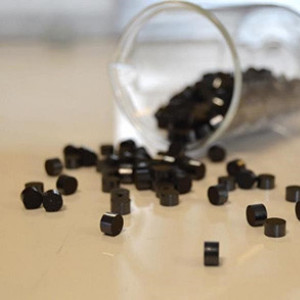| Kharazmi Technology Development |

| Registration Date | 27 Oct 2020 |
| Revision Date | 27 Oct 2020 |
| Share |
Petroleum Well Treatment
LTS CatalystThe product is manufactured as small disks and loaded into industrial reactors. Achievement of nanostructures containing particles smaller than 20 nm in this product yielded more active surface area for the product followed by more activity. According to ISO 4-4 national standard 80004-2, this product contains nanoparticles and has the capability of being in the field of nanotechnology. To investigate the catalytic properties of this product, the test was performed on a Catatest system and an industrial sample (from Sud-chemie Company) was performed and the exhaust gases were measured by chromatography. Comparison of the results of the catalytic test of the sample produced and the industrial sample indicates a very good coincidence of these two products.
The water-gas transfer process is one of the oldest heterogeneous catalytic reactions used in the industry to produce high-purity hydrogen and reduce carbon monoxide from synthesized gas. Catalysts are used in most chemical industries and in all refineries and petrochemicals as a vital material to accelerate chemical reactions. Low Temperature Water Gas Shift is one of the most widely used catalysts in low temperature gas-water reactors to convert carbon monoxide to hydrogen. The low-temperature catalysts for the water-gas transition are in the form of dark gray cylindrical disks that are produced by the co-deposition process. These catalysts are used in ammonia petrochemical complexes and oil refining companies to purify hydrogen. In general, the task of these catalysts, like those of high temperature gas-water transfer catalysts, is to reduce the amount of carbon monoxide present in the gas stream from the high temperature gas-water reactor which was decreased by about 3% molar, in reaction with water vapor to below 0.5% volume or molar. The lower temperature of the reactor containing these catalysts as compared to the high temperature reactors is the reason to it is called low temperature. The catalytically active metal in this type of catalyst is copper, which after catalytic reduction in the reactor and the conversion of copper oxide to copper, has catalytic properties. For maximum performance these catalysts need to have the highest level of catalytic activity. With the advent of nanotechnology in this industry and the production of remarkably active nano-catalysts, a tremendous change in their performance has occurred.